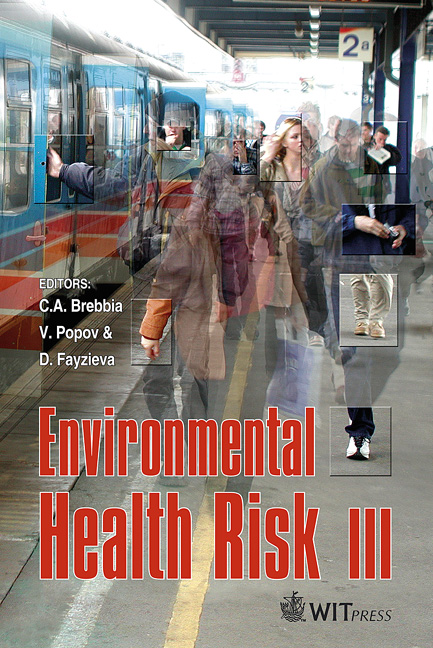Quantitative Microbial Risk Assessment Modelling For The Use Of Reclaimed Water In Irrigated Horticulture
Price
Free (open access)
Transaction
Volume
9
Pages
11
Published
2005
Size
346 kb
Paper DOI
10.2495/EHR050081
Copyright
WIT Press
Author(s)
A. J. Hamilton, F. Stagnitti, A.-M. Boland & R. Premier
Abstract
Reuse of treated sewage effluent for the irrigation of horticultural crops is being propounded and practiced as a means of alleviating pressure on freshwater resources. Concerns have been raised, however, as to the risk to human health, primarily disease, associated with this practice. Quantitative Microbial Risk Assessment (QMRA) is a useful tool for estimating this risk. We describe how QMRA works and the current state of knowledge of the components of QMRA models for the horticultural reuse scenario. Keywords: food-safety, horticulture, pathogen, quantitative microbial risk assessment, reclaimed water, recycled water, vegetable. 1 Introduction Increasing human population sizes are placing significant strain on the World’s freshwater resources. Rivers are becoming polluted, extraction for agricultural use is substantially reducing flows, and competition for freshwater is intensifying. Moreover, with the growth of large cities, there is a concomitant escalation in sewage output, and thus a likely increase in detrimental effects associated with discharge of effluent to receiving waters. One means of alleviating such stresses is to reuse wastewater for horticultural irrigation (Hamilton et al. [1]). But this practice has been approached with a degree of trepidation, owing primarily to concerns about risks to human health via contamination of food with pathogenic microorganisms [1]. In theory at least, such risks can be mitigated through combinations of low- and high-technology engineering solutions. At the recent Integrated Concepts in Recycled Water
Keywords
food-safety, horticulture, pathogen, quantitative microbial risk assessment, reclaimed water, recycled water, vegetable.





